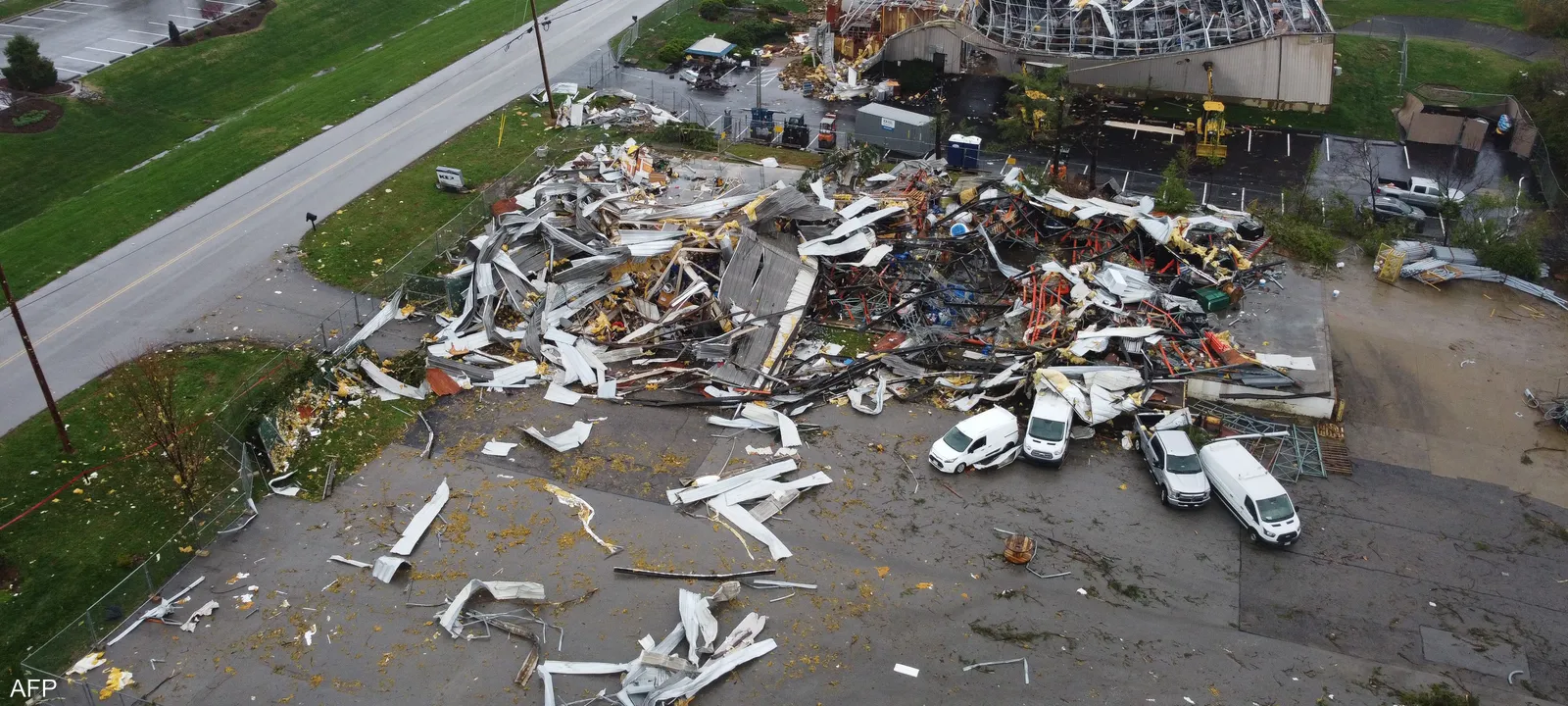Severe storms sweeping across the central and eastern United States have claimed the lives of at least 17 people, according to officials, as the National Weather Service warned of continued flood risks in the coming days.
The storms, which spanned states from Arkansas to Ohio, brought tornadoes, flash floods, and widespread destruction. Roads were inundated, buildings damaged, and power lines brought down across several regions.
Tennessee Hit Hardest
Tennessee bore the brunt of the extreme weather. Authorities reported that 10 people died in the western part of the state alone.
Two more people died due to flooding in Missouri and Kentucky, while one fatality was reported in each of Arkansas, Indiana, and Mississippi.
In Jeffersontown, Kentucky, multiple buildings were destroyed by a tornado, according to AFP correspondents on the ground.
Widespread Damage
Images shared across social media and local news outlets showed scenes of widespread devastation:
- Homes flattened,
- Trees uprooted,
- Vehicles overturned,
- And power lines downed across multiple states.
The National Weather Service issued a warning late Sunday, stating that “the threat of heavy rainfall and sudden flooding remains high in parts of the Southeast and Gulf Coast tonight.”
Governor Urges Caution
Kentucky Governor Andy Beshear took to social media to highlight the scale of the disaster, writing:
“Flooding has reached record levels in many areas. Please avoid travel and do not drive through standing water.”
Power Outages and Climate Concerns
As of Sunday, around 140,000 customers remained without power, according to the PowerOutage.us monitoring website.
Experts continue to link such extreme weather patterns to climate change. Scientists note that global warming is altering climate behavior and increasing the frequency and severity of extreme weather events.
Last year, the U.S. experienced record-breaking temperatures and a series of destructive tornadoes, adding urgency to calls for better disaster preparedness and climate action.


















